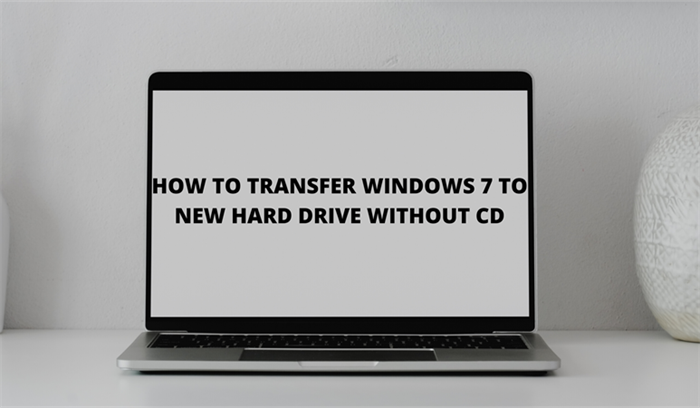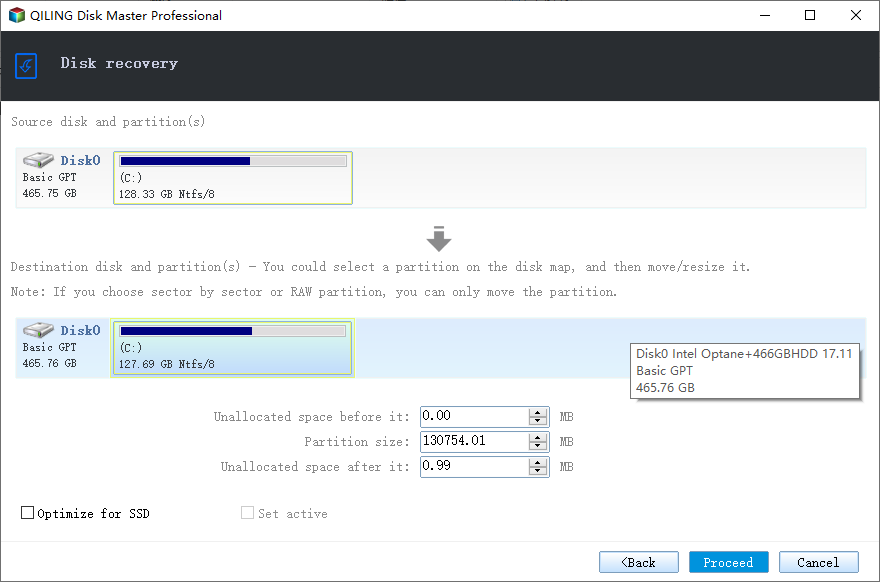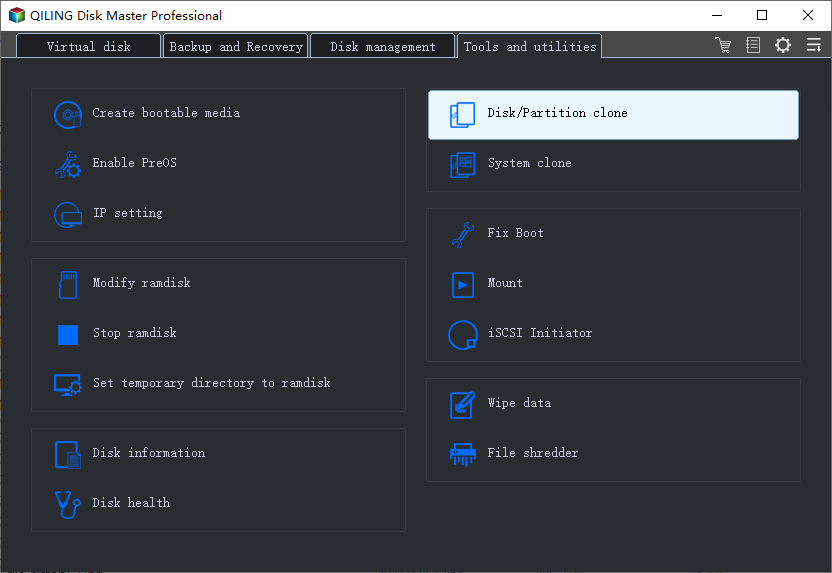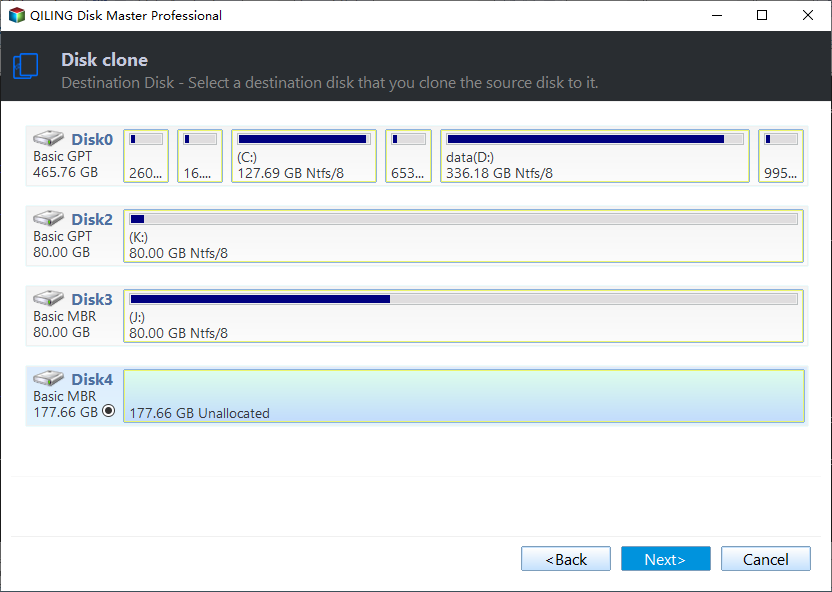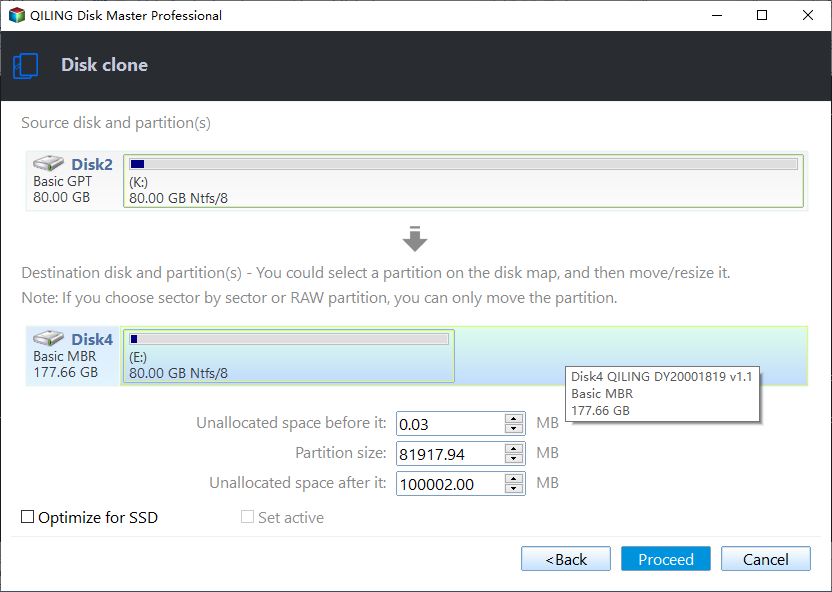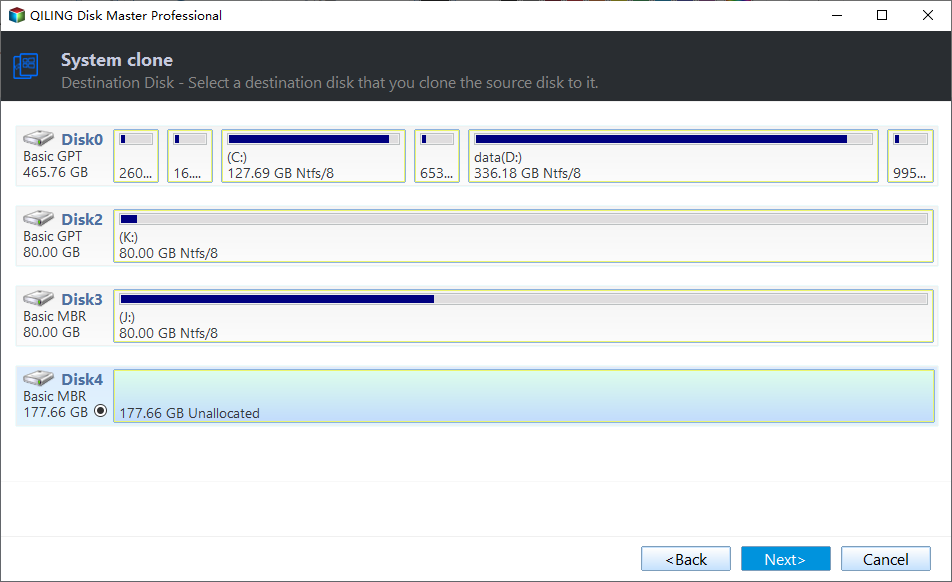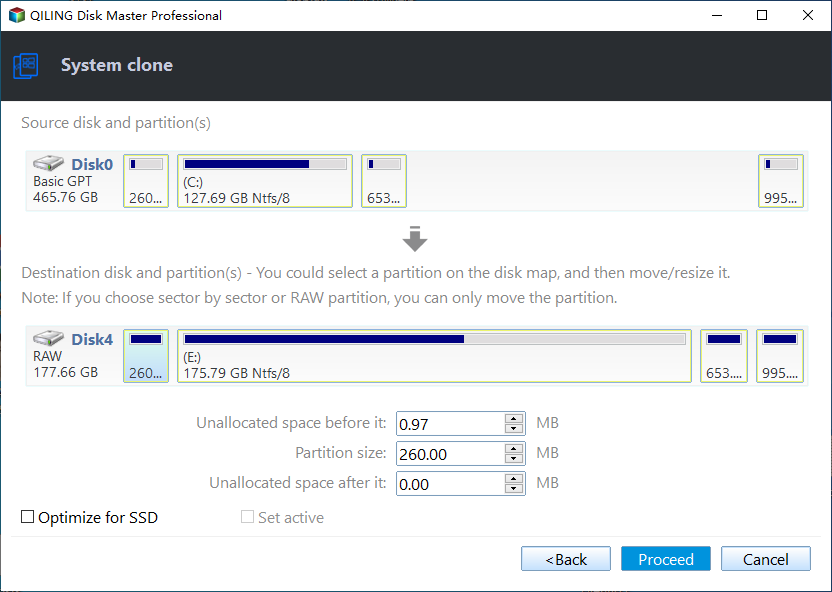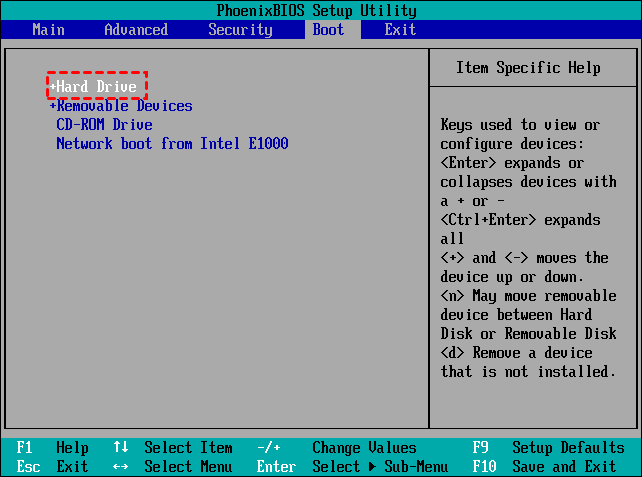Transfer Windows 7, 8, 10, 11 to New Hard Drive without CD [3 FREE Ways]
Case: transfer Windows 7 to new hard drive without CD
You can try to recover your existing Windows 7 installation from the hard drive with the disk read error, or you can purchase a new Windows 7 license and install it on your new SSD. Alternatively, you can consider purchasing a Windows 10 or 11 license, which would allow you to install a more recent operating system on your new SSD. You can also consider purchasing a Windows 7 license from a third-party seller, but be aware that this may not be a legitimate or supported option.
When a hard drive fails or performs poorly, upgrading to a newer one, such as replacing a hard disk drive (HDD) with a solid-state drive (SSD), can significantly improve performance.
Don't want to lose data or re-You can try to transfer Windows 7 to a new hard drive without purchasing a new license or reinstalling, as long as it's the same computer and you're using the same OEM license. The license key can be used on the same computer when you transfer Windows 7 to a new hard drive.
How do I transfer Windows 7 to new hard drive without CD?
To migrate the system, you can either backup and restore the system image or directly clone the system disk to a new hard drive, whether it's an SSD or HDD.
Backup and Restore: WinPE will compress all the content of a system partition or disk into an image file, requiring a storage device to store the backup image temporarily and restore it before booting from it. This process also necessitates creating a bootable USB or CD/DVD if the computer is not bootable.
Clone: The system will be preserved with its original partition and disk structure, without the need for an image file, additional devices, or restoration. However, a bootable media will still be necessary in case the computer fails.
If you're unsure which method to use, refer to the corresponding contents and try the methods for system and disk separately. This will help you choose the best option for your needs.
✍If you want to transfer Windows 10 to new computer, try backup and restore method. Its Universal Restore feature is able to resolve different hardware issues between computers.
✍ Upgrading a hard drive or boosting computer performance can be done more easily by cloning the existing drive. This process involves creating a duplicate of the original drive, which can then be used as the new drive, making the operation much simpler and less time-consuming.
Migrate Windows 7 to new hard drive step by step
You may have already chosen a method to try and jumped at the chance to do so. To ensure the target SSD is bootable after restoration, make some preparations in advance. Then, try the method that suits your needs.
Preparations before operating system migration
What things should be done first?
1. Clean up the current system hard drive.
To speed up the transferring process, consider deleting unnecessary junk files and uninstalling rarely used apps to lighten your system. However, be cautious not to delete or move system files you're unfamiliar with, as they're crucial to your system's functionality.
2. Connect the target drive.
To upgrade your computer's storage, ensure the new SSD or HDD has sufficient capacity to accommodate your operating system and other essential files. If your computer only has one slot, consider using a USB-to-SATA adapter to connect the new drive alongside your existing one. This allows you to maintain your current setup while still benefiting from the added storage capacity.
3. Pick an efficient system migration tool.
While Windows has a Backup and Restore utility, the process of system migration is complicated and requires an installation or recovery disk to restore the system image to the new hard drive, making it more recommended to use freeware like Qiling Disk Master Standard instead.
You can use the software to transfer Windows to a new drive by restoring or cloning, making the process much simpler. You can download and install it to try it out, or if you're a server user, you might want to try Qiling Disk Master Server instead.
Way 1: Migrate Windows 7 to new hard drive using backup and restore method
This method involves using "System Backup" and "System Restore" to indirectly migrate the OS to an SSD without cloning. However, it is a more complicated process that requires more time and effort, making it less efficient than cloning methods.
Steps to backup Windows 7 and restore to new drive:
1. First, navigate to Backup section and click System Backup.
2. Choose a location to back up the system partitions, select it and tap Proceed to proceed to the next step. The backup process will then start and complete on its own.
3. Go to the Restore section, click Select Task, choose the task you just created, select Restore this system backup, tick Restore system to other location at the bottom, and click Next.
4. To migrate Windows 7 to a new hard drive, select the connected new SSD or HDD as the destination, confirm the operation, and proceed.
Related tips:
◆ If you want to transfer Windows 7 to another computer with different hardware, you can enable Universal Restore to ensure the new computer can boot after the transfer.
◆ If you want to restore an image file to a new hard drive without booting Windows, you can create a recovery environment with Qiling Disk Master in advance.
Way 2: Clone disk with Windows installed to new hard drive
Disk Clone This software allows for a straightforward transfer of Windows 7 to a new hard drive without the need for a CD. It enables the direct cloning of a disk, eliminating the need to create a backup image and then restore it. Alternatively, to clone only the system and boot-related drive, a different method can be tried.
Steps to clone Windows 7 disk to new hard drive:
1. To clone a disk, switch to the "Tools and utilities" tab on the main interface and select "Disk Clone".
◆ This Standard edition only supports cloning system disk MBR to MBR. If you want to clone system disk GPT to GPT, GPT to MBR or vice versa, you need to upgrade to the Professional edition for that functionality.
◆ To check if your disk is MBR or GPT, open the Disk Management tool, right-click on the disk in question, and select "Properties". In the properties window, scroll down to the "Partition style" section, where it will be marked as either "Master Boot Record (MBR)" or "GUID Partition Table (GPT)".
2. Select the disk you want to clone as the source disk and the new hard drive as the destination disk.
3. Here, set up advanced settings and click Proceed to clone Windows 7 to a new hard drive.
Related tips:
◆ Edit Partitions: This software allows you to specify partition sizes, labels, and other settings, and can also convert the destination disk from MBR to GPT or vice versa. Some features are only available in advanced versions.
◆ SSD Alignment: It is suggested to check this option to improve performance when the target disk is an SSD.
◆ Sector By Sector Clone: By checking this option, Qiling Disk Master will clone every sector to the target disk, regardless of whether it's used or not. This should not be selected when cloning a larger drive to a smaller drive.
Way 3: Clone only operating system to new SSD or HDD quickly
System Clone, supported by Qiling Disk Master Professional and higher editions, allows for the direct and quick cloning of Windows 7 to a new hard drive without the need for a CD.
There is no text to rewrite. It seems like this is the start of a conversation.
The Clone feature in the trail version can only be demonstrated, and to clone OS to a new drive and boot from it, you need to upgrade to the pro trial. This page also offers a 10% discount.
Steps to migrate only OS to new drive:
1. To clone a system, navigate to the "Tools and utilities" section and select "System Clone". If you haven't upgraded to the Professional version, you may see a "PRO" mark.
2. The system partitions will be selected directly, you just need to specify a destination disk and click next.
3. To finalize the cloning process, adjust the advanced settings by selecting the "SSD Alignment" and "Sector by sector clone" options, then proceed. If the target disk is larger, ensure the "Make full use of disk space" feature is enabled to extend the unallocated space to the system partition.
Related tips:
◆ To transfer Windows 7 to a new SSD for improved performance, you can enable SSD Alignment in the transfer process, which will enhance the SSD's reading and writing speed.
◆ After cloning, the new hard drive will be completely replaced by the original one. If the new hard drive contains important data, it's recommended to back it up before cloning to avoid data loss.
◆ The original hard drive will not be erased, allowing it to be used as a secondary storage or a backup in case of a system failure.
Supplement: how to launch Windows 7 from new hard drive
If you're unsure how to start Windows 7 on a new drive, there are two common methods. Firstly, you can simply insert the Windows 7 installation disc or USB drive into your computer and follow the on-screen instructions to boot from it.
1. 1. Shut down your PC and remove the source disk. 2. Install the newly restored or cloned hard drive on the machine. 3.
2. To resolve the issue, restart your computer and, as it boots, press the key to enter the BIOS (usually Del, F2, or F12, depending on your system). In the BIOS settings, adjust the boot priority to prioritize the new hard drive. Once you've made this change, save your settings and exit the BIOS.
Conclusion
Transferring Windows 7 to a new hard drive is not complicated, even without a CD. You'll need a large enough and accessible new hard drive, and a reliable tool like Qiling Disk Master to support the process.
The first two methods listed are free, allowing for a smooth and intuitive Windows OS migration. The standard version is sufficient, but for more advanced features and an easier process, Qiling Disk Master Professional is a good option, especially the technician or techplus edition for simultaneous deployment of system images to multiple computers.
You can also clone Windows 10 to an SSD or HDD for free without an installation disk, and the process is similar to the one mentioned.
Related Articles
- How to Backup Windows 7 and Restore on Another Computer?
Learn how to backup Windows 7 and restore backup image to new hard drive in another computer with dissimilar hardware with the help of Qiling Disk Master. - Create Bootable CD/DVD/USB Based on Windows PE or Linux
What is a bootable disc? How to create bootable CD/DVD or USB drive for Windows or Linux system? Read this article to find the answer. - How to Migrate OS to Smaller SSD in Windows 10/8/7? (Secure Boot)
You will get the best software to migrate OS to SSD or HDD without reinstalling, even for smaller ones. The steps will be introduced in the following. - System Restore from BIOS in Windows 7︱Step-by-Step Guide
How to realize System Restore from BIOS in Windows 7? Whether you have an installation disc or not, you can find the corresponding solution from this page.
